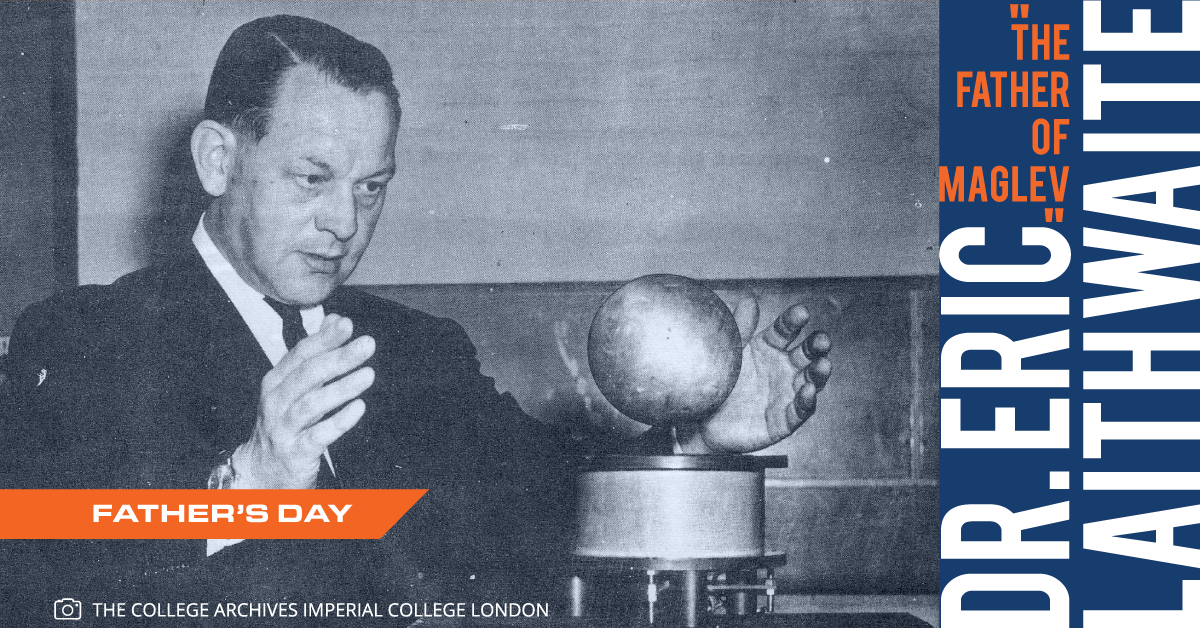To many, Dr. Eric Laithwaite was a renowned electrical engineer. To transit lovers, he is known as the Father of Maglev for his role in introducing revolutionary technology into the transportation world.
Dr. Laithwaite was a British Electrical Engineer born in Atherton, Lancashire in the UK in 1921. Earning a PhD and DSc in Electrical Engineering from Manchester University, Laithwaite was well educated in electricity and electromagnetic forces.
During the Second World War, Laithwaite served in the Royal Air Force before returning to his alma mater, Manchester University, to teach engineering between 1950 and 1964. Laithwaite later became a Professor at Imperial College in London where he taught Heavy Electrical Engineering to students interested in STEM careers.
However, much of his career was spent developing a futuristic transportation technology that has yet to be implemented into transportation systems across America.
Dr. Laithwaite earned the moniker “the Father of Maglev” for his high-speed train concept, developed over 50 years ago. In 1964, Laithwaite developed the world’s first full-size linear induction motor with the help of early research performed by Charles Wheatstone.
While traditional electric motors use rotational motion along tracks, Laithwaite’s concept would use linear motion, picture a traditional electric motor that has been split open and laid out in a line extending down the length of the guideway. Just like a conventional motor, a linear motor is made up of moving parts and stationary parts, but when current is applied, the train is propelled along the guideway, rather than spinning on an axis. This means the motor produces direct thrust without any conversion of rotational energy into movement and therefore no energy lost from friction while in service, providing a more efficient and quieter rider experience.
Two physicists, Dr. Gordon T. Danby and Dr. James R. Powell, excited over the promise of magnetic force, decided to take Laithwaite’s concept a step further. While sitting in traffic along Throgs Neck Bridge, Powell envisioned a high-speed train that would float on magnets.
Gordon and Powell, designed a prototype that would use superconducting electromagnets to float a train above the ground. They called their device the “Electromagnetic inductive suspension and stabilization system for a ground vehicle”. The original concept was to use a propellor, jet or rocket to achieve thrust. Laithwaite’s idea to use a linear induction motor, combined with Gordan and Powell’s idea to suspend and stabilize a train above tracks with no physical contact between the train and the guideway led to the superconducting maglev system that we know today.
As mind-blowing as this concept was, the technology was never introduced into any transportation system in the United States. Various iterations of this technology were implemented in other countries around the world. The first commercial maglev line was built in Birmingham, England. It’s low-speed maglev train connected Birmingham International airport to Birmingham International railway station from 1984-1995. Germany also introduced its own version of a maglev line, with a one-mile-low-speed maglev that connected stations across Berlin. Between 1984 and 2012, Germany’s high-speed Transrapid maglev operated on a 20-mile test track connecting Emsland to Lower Saxony.
Japan started work to implement this technology into its transportation system in 1962 with the goal of a next-generation ultra-fast link connecting Tokyo and Osaka in 1 hour. Japan’s first successful levitation run on the M100 was revealed at the Railway Technical Research Institute in 1972. A Maglev test track was constructed in Miyazaki in 1977, and in 1979 the first test vehicle ML-500 achieved a world speed record at the time of 321 mph! Japan Central Railway is now working to extend its line to connect Tokyo to Nagoya, a similar distance to Northeast Malgev’s proposed line to connect Washington, DC to New York.
Japan has been developing SCMAGLEV technology now for over 20 years and has successfully run over 1.7 million miles and has carried more than 287,000 passengers!
Now, Northeast Maglev is working to bring this developed, safe, reliable and proven technology to the Northeast Corridor with development of a high-speed rail line that will ultimately connect D.C to NYC in 1 hour! The first leg of this project will connect D.C. to Baltimore, with a stop at BWI Airport, in 15 minutes.
The development of the SCMAGLEV on one of the world’s most congested corridors means connecting major metropolitan cities of the Northeast to thousands of jobs, career and education opportunities in a matter of minutes.
We appreciate Dr. Eric Laithwaite for his determination to bring a high-speed solution to the world of transportation. The time is now to catch up with the rest of the world with a safe, reliable, efficient and fast transportation solution.
The time is now for SCMAGLEV!
